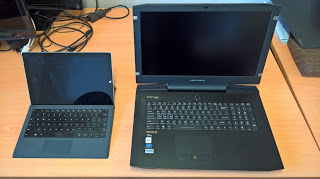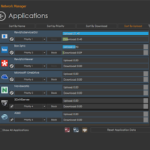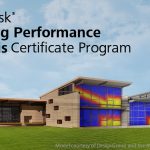So, you are in the market for a new BIM workstation? Recently I was too, and I wanted to share my experience and the ‘process’ of specifying, buying, and setting up a BIM workstation.
Over the years, I have been involved in setting the recommended specs for quite a number of CAD and BIM machines, and have used various suppliers – from big name brands, to the smaller PC builders. I personally feel that the big name brands rarely make sense in terms of what you get for what you spend. Many large firms will go with HP or Dell because they have some kind of long term agreement with them. But for small to medium businesses, you can definitely shop around to get maximum performance for your budget.
Target Applications
Firstly, you really need to clearly define the purpose of this machine… and this often boils down to “Which software am I going to use most of the time?” It can be good to put an estimated percentage on this.
For me, it would be something like:
- Revit 30%
- Navisworks 30%
- Revizto 20%
- Other 20%
Portability
Secondly, you need to determine if you need portability. I move around quite a lot, typically spending a few days in a site office, a day in our head office, and a day or two doing training or implementation work each week. So I need a powerful machine that can jump from desk to desk. I’m not overly concerned with battery life or even weight, as it won’t ever really be a ‘lap’ top, but rather a portable desktop workstation.
VM? VR?
I thought it would be worth mentioning that some people at this point would immediately jump to running a thin client of some sort, connected to a web host virtual machine with heaps of grunt. And that makes sense for some people. But I need to be able to run things like the Oculus Rift and HTC Vive, and the internet connection is simply not good enough in parts of Australia to completely rely on a virtual workstation
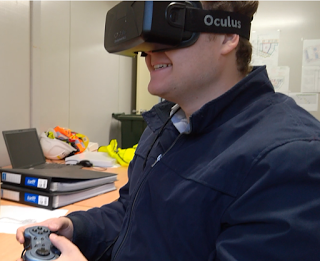
Form Factor
With that in mind, I wanted to build the fastest portable Revit, Navisworks and Revizto machine without going too crazy on the budget. The Director here at Virtual Built understands the importance of good hardware, which is great. I have been in the situation at previous jobs where you are wrestling to get an outdated piece of hardware updated or refreshed… it can be a drawn out battle!
Moving on, what does the above actually mean in terms of platform and specs? I looked at mobile and compact tower PCs, but it didn’t seem practical. Some of these have a monitor engaged on the side of the tower, but again, this wasn’t really well suited to running meetings.
So, I ended up looking at laptops. I started to focus on gaming laptops. Because a big part of how we work involves Revizto, and Revizto is built on Unity, and Unity is a game engine… it makes sense that good game hardware will run nicely. I have already come to the realisation that high end (Quadro) graphics in terms of ROI doesn’t make a lot of sense on Revit, and even with Navisworks I don’t see it as a huge advantage. If you were doing a lot of 3dsMax work, maybe the high end graphics would be more important.
Memory (RAM)
It is actually quite difficult to find a laptop that can take 64GB of RAM. I feel that 64GB RAM is the new baseline if you are working on any kind of complicated BIM projects, such as large hospitals. This helped prune down the list to just those gaming laptops that could handle big memory.
CPU
My comments about Quadro graphics cards kind of come into play here as well. Most people in a normal working environment will simply get better value from the high end consumer Intel CPU range (such as i7), rather than going with Xeon/s. And I was more interested in clock speed than cores, because while Revit is getting better at using multiple cores, it still isn’t really there yet.
Graphics
So, what graphics card should we go for? Many laptops come with the M (Mobility) range of nVIDIA graphics, like 980M and so on. I guess I’m an nVIDIA guy? I was pretty interested to learn that some high end gaming laptops actually take a full desktop graphics card architecture and cram it into the portable form factor. This means I could have a portable machine, without sacrificing any graphics prowess.
Storage
Obviously, the main drive needs to be an SSD, minimum 512GB. But did you know about PCIe M.2 SSD drives? These things are ridiculously fast. We will also probably need a big secondary drive to store large datasets, including a sync location for our company Box storage. This doesn’t need to be an SSD, but it could be if the budget allows.
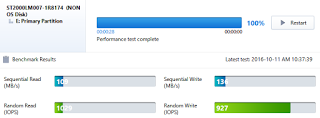 |
| Non SSD drive performance |
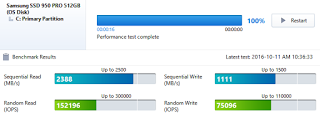 |
| PCIe M.2 SSD performance |
Other
Some peripheral choices are not hugely important, but I think that getting the fastest and best network interfaces (Wifi and LAN) actually do make a productivity difference. Minimum of 3 or 4 USB3.0 ports if you can, and a few different graphics outputs – HDMI and mini DVI at a minimum. Would also be nice to have integrated Miracast (Wireless Display adapter) as well.
Summary
What does all of this mean? Well, let’s try and sum up the spec in one sentence:
A laptop with 64GB RAM,
the fastest i7 processor that can fit into the budget,
desktop nVIDIA gaming graphics (minimum 970),
a PCIe M.2 SSD primary drive, 2TB secondary,
and fast network interfaces.
In Part 1 of this post, we discussed the briefing and specification of a high end portable BIM workstation. But which one did I get? And how did it perform? You will find out in the future Parts of this series…

